🍃 The flower that tastes like spice and grows like courage
I grew my first nasturtium during a season of uncertainty.
I had no garden—just a cracked terracotta pot and a heart that needed soft things.
The seeds burst open quickly, like they’d been waiting all along.
And when the first red bloom of ‘Empress of India’ unfurled, it felt like a whisper from a braver version of myself.
Nasturtiums (Tropaeolum majus) aren’t delicate damsels.
They’re fire-colored, pepper-flavored, and bold-spirited—thriving where the soil is lean and the gardener unsure.
To grow them is to remember that even in overlooked places, beauty not only survives—it thrives.
🌿 What Are Nasturtiums?
Nasturtiums are flowering annuals native to South America, adored for their round, shield-like leaves, vivid edible blooms, and resilient spirit. They’re equally at home in cottage gardens, city balconies, and overgrown corners yearning for color.
Whether trailing or compact, they charm bees and hummingbirds, spice up your salads, and remind you that wildness is a form of wisdom.
🌸 A Portrait of Popular Nasturtium Varieties
Let me introduce you to the girls—each with her own mood, color, and secret strength.
✶ ‘Empress of India’
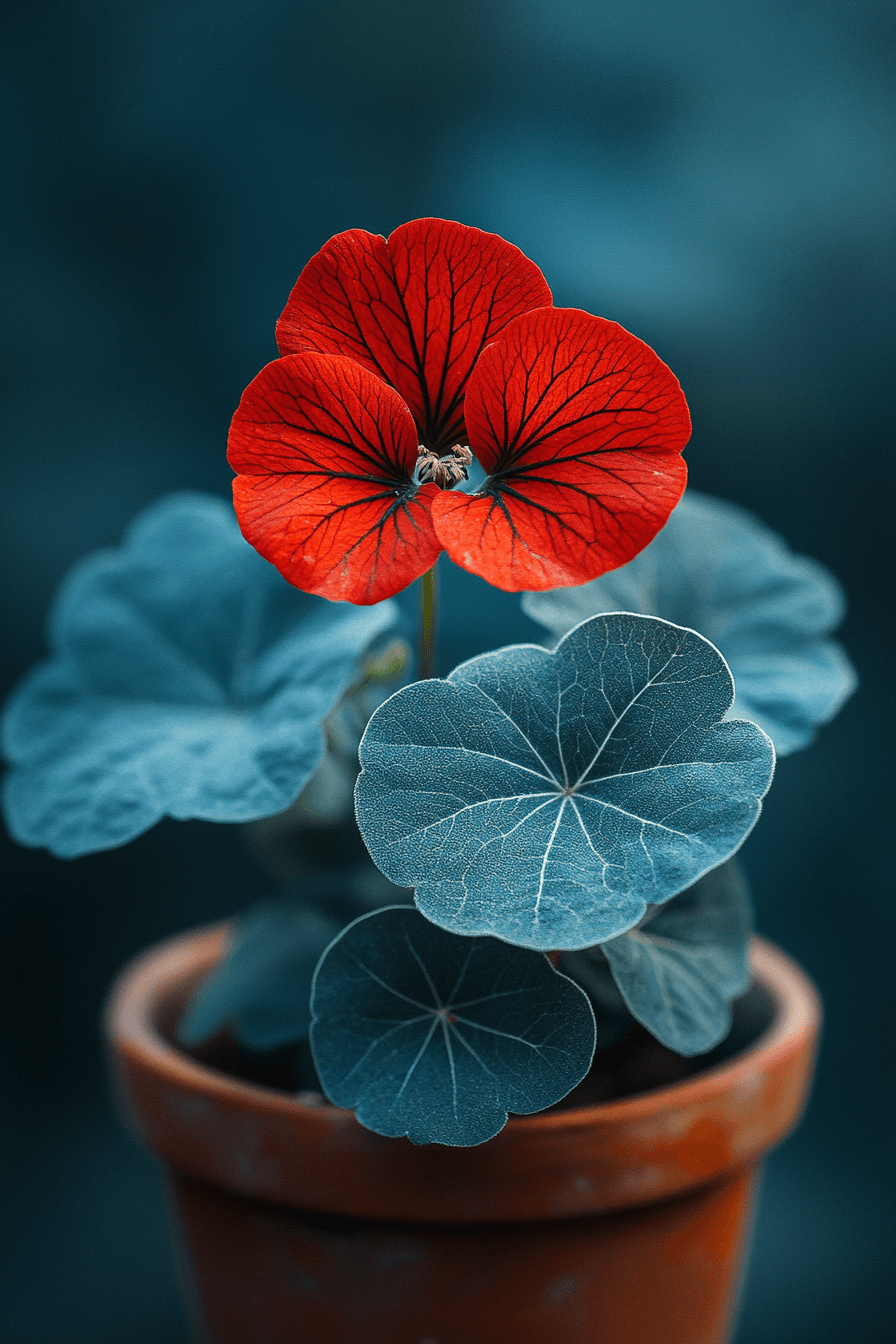
- Color: Deep crimson red
- Foliage: Blue-green matte
- Type: Compact, upright
- Energy: Regal. Steadfast. A bloom that wears its fire quietly.
- Best For: Containers, edge plantings, edible elegance
- Care Tip: Avoid overwatering—she prefers slightly dry spells to stay vivid and compact.
✶ ‘Alaska’ Series
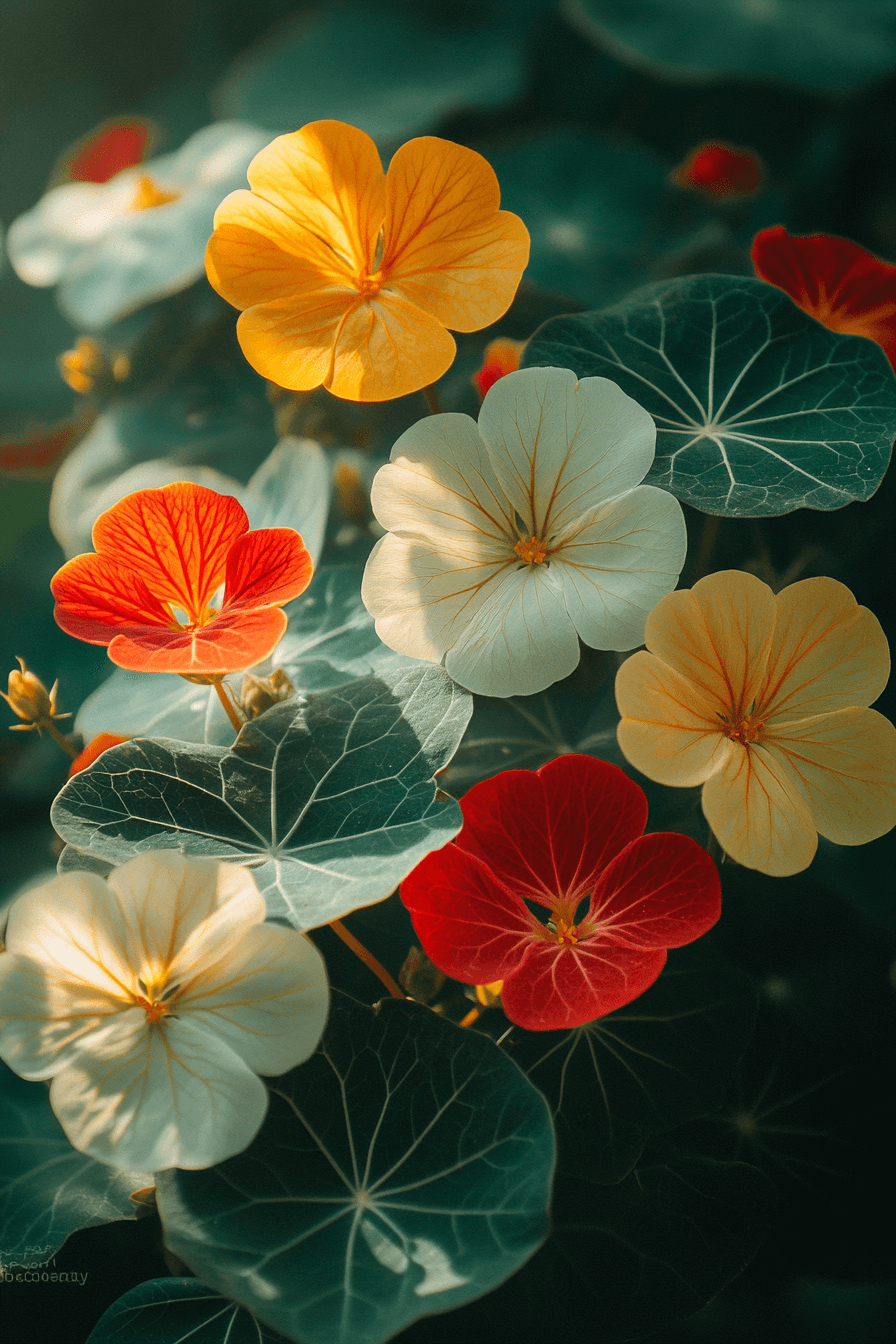
- Color: Red, gold, tangerine
- Leaves: Cream-marbled variegation
- Type: Upright or softly trailing
- Energy: Cool contradiction—frosted foliage, warm blooms
- Use Tip: Perfect for edible flower borders or moon gardens
- Care Tip: Needs more sun than others to keep variegation crisp and non-leggy.
✶ ‘Jewel Mix’
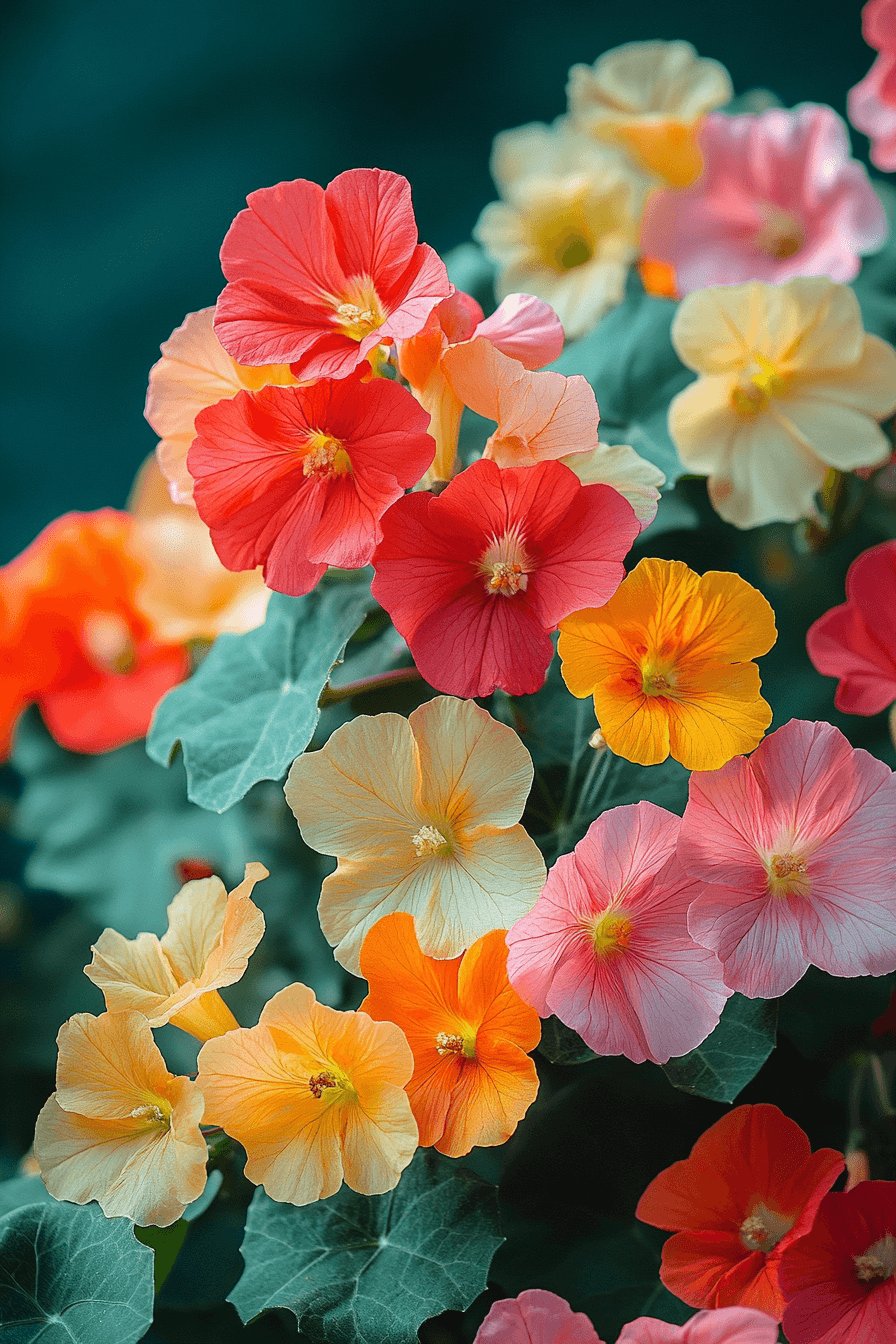
- Color: Scarlet, peach, butter yellow (double or semi-double)
- Type: Bushy
- Energy: Playful, generous, joyfully chaotic
- Best For: Summer bouquets, color therapy, childlike wonder
- Care Tip: Deadhead often to prolong the blooming season—it loves attention.
✶ ‘Tip Top’ Series
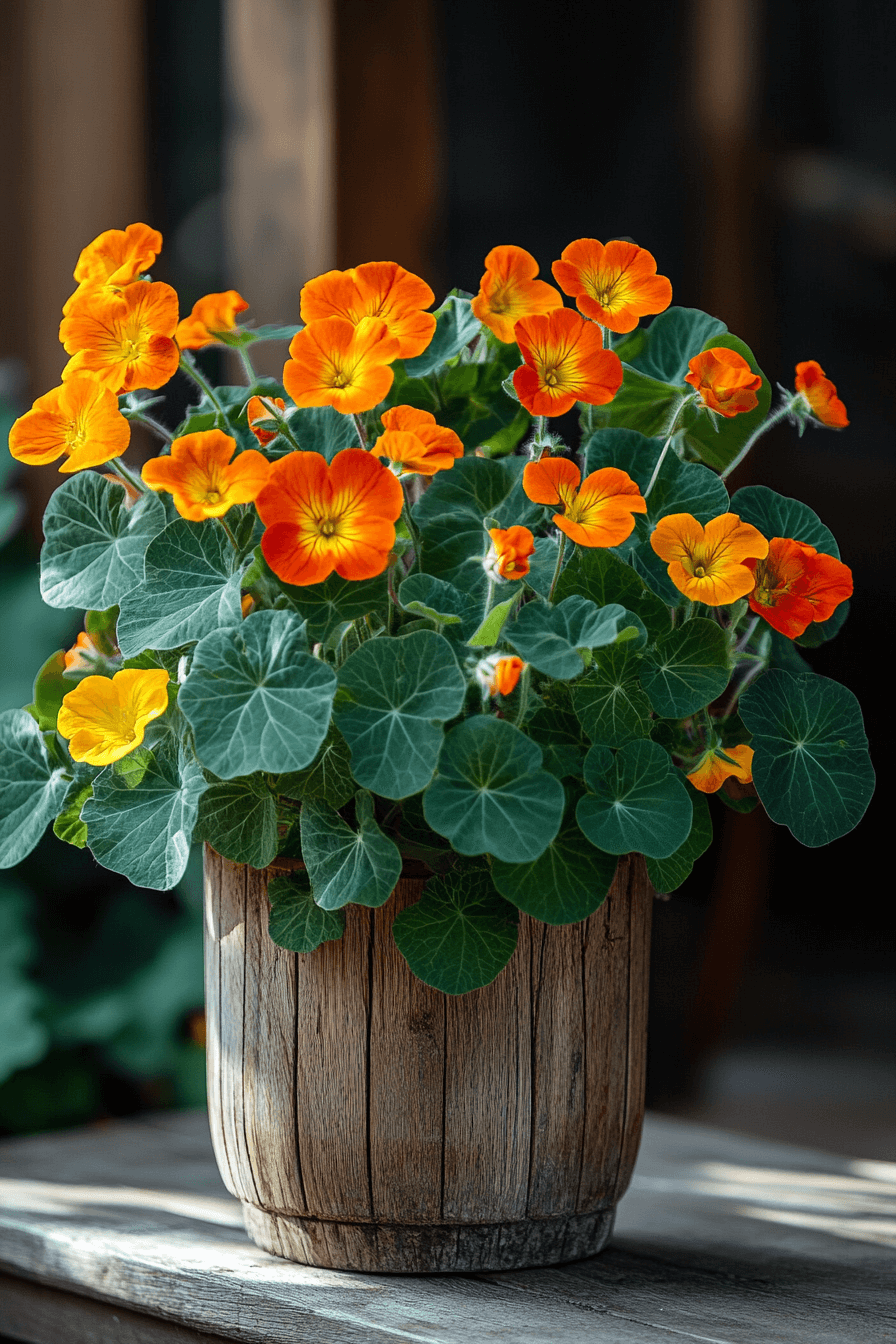
- Traits: Compact and floriferous
- Flowers: Upward-facing, making eye contact
- Best In: Window boxes, places close to the heart
- Why I Love Her: A tidy rebel. She knows where she stands.
- Care Tip: Pinch back early to encourage dense, upright growth.
✶ ‘Whirlybird Mix’
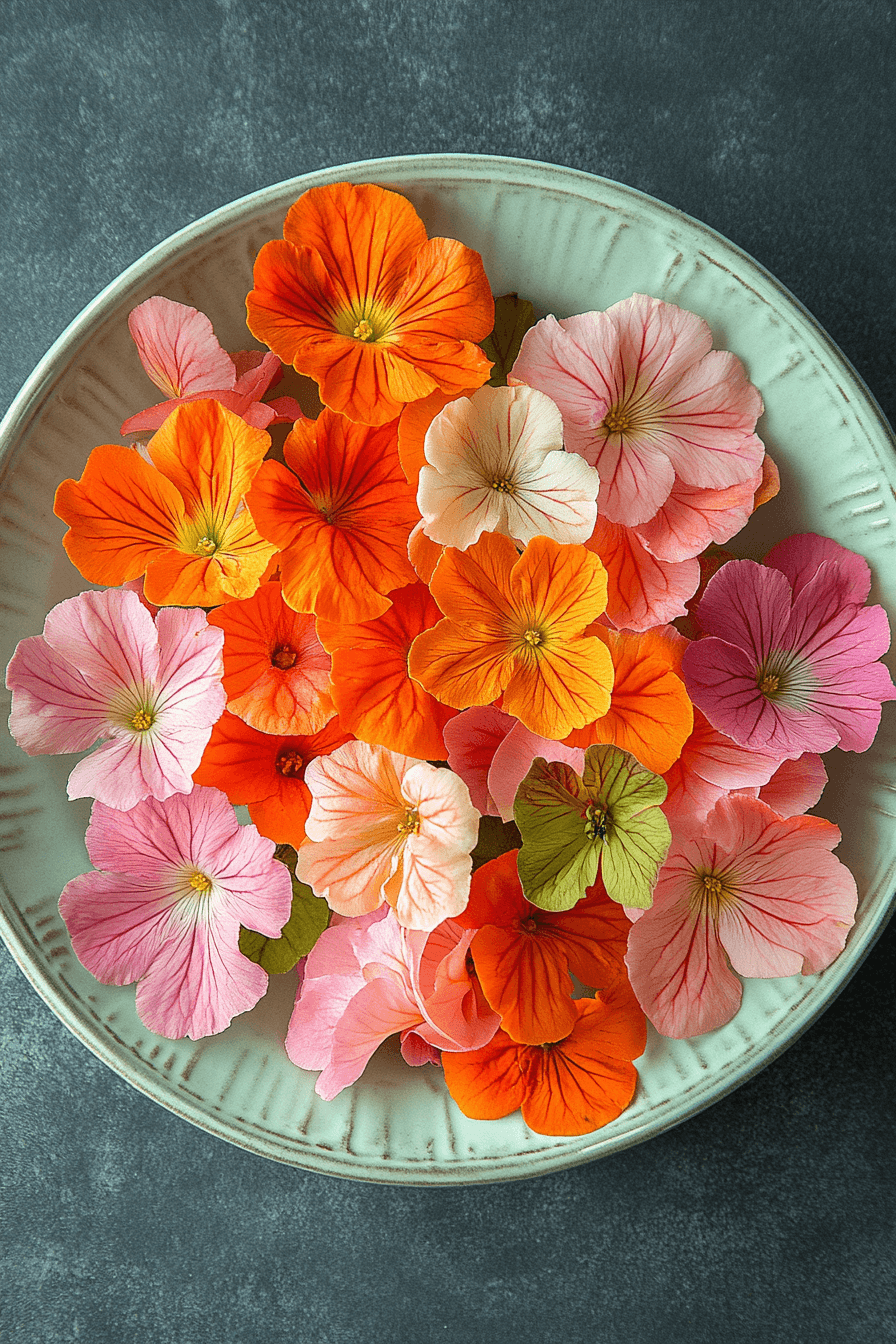
- Color: Open-petaled, no nectar spurs
- Best Use: Culinary—easy to harvest and wash
- Poetic Note: Her openness is not vulnerability—it’s grace in action.
- Care Tip: Ideal for raised beds—low foliage helps you harvest easily.
✶ ‘Gleam’ Series
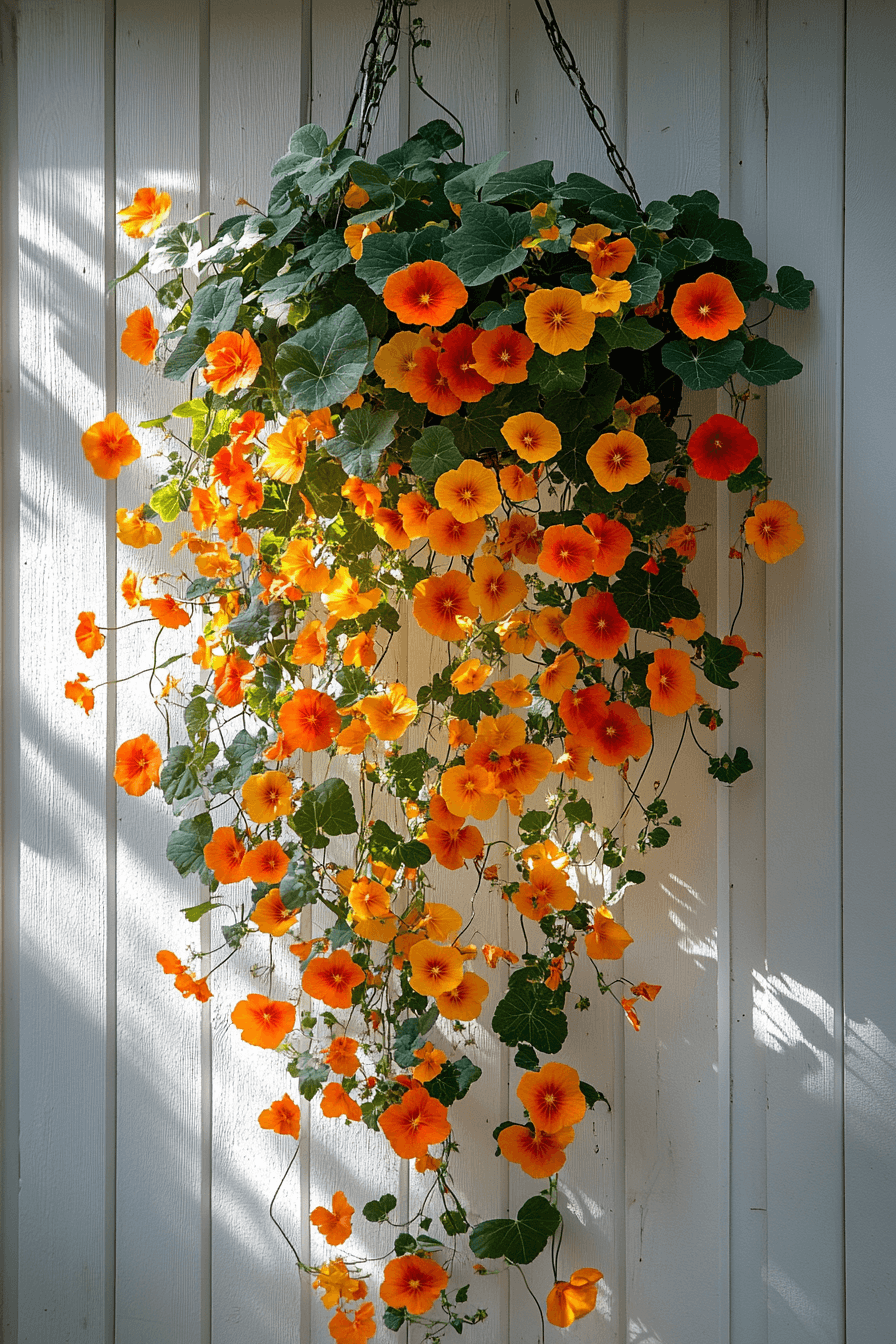
- Habit: Vining, trailing
- Perfect For: Hanging baskets, vertical softscapes
- Spirit: Overflowing joy, an invitation to spill over the edge
- Care Tip: Give her something to climb, and she’ll reward you with fountains of bloom.
✶ ‘Black Velvet’
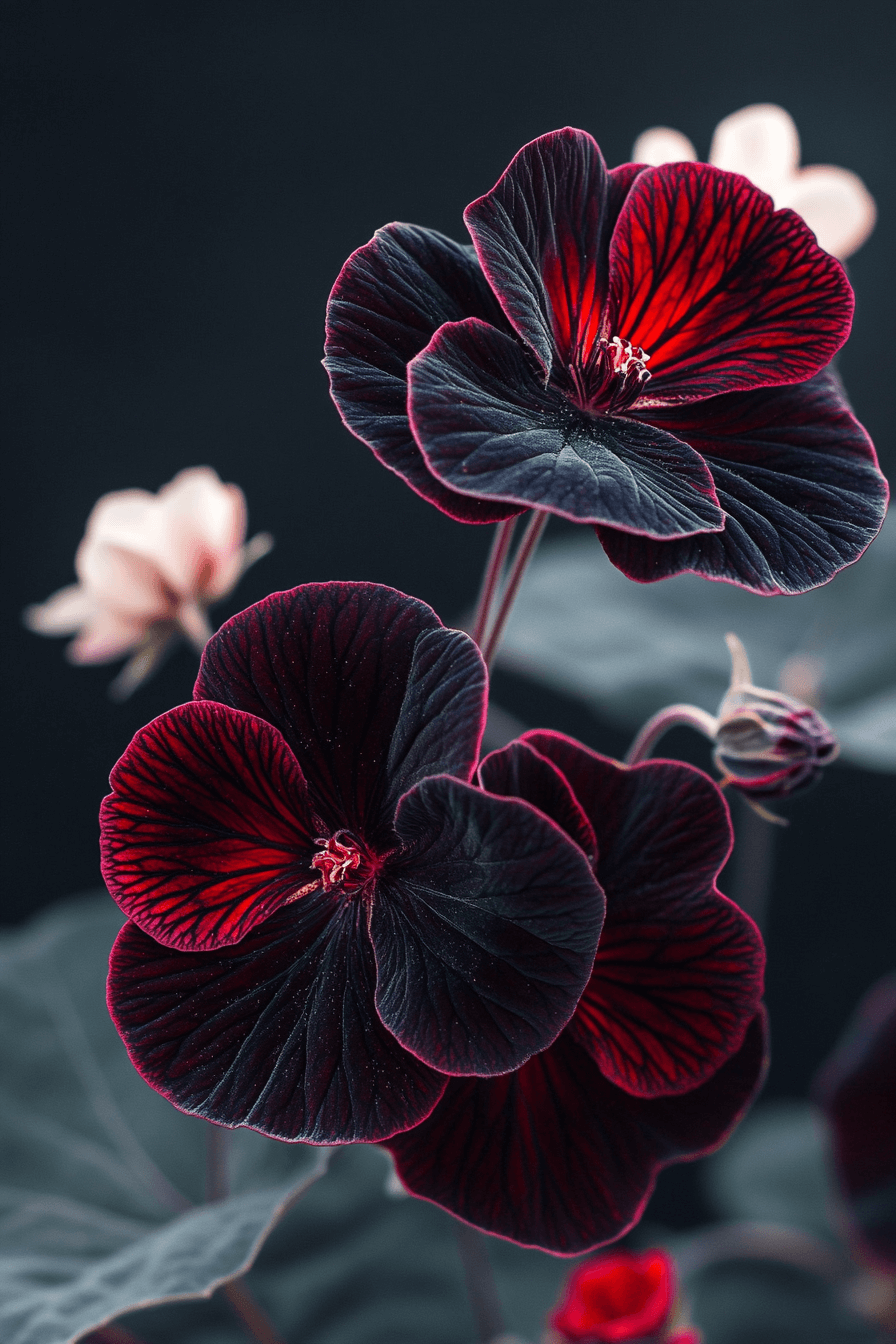
- Color: Near-black burgundy, velvety
- Mood: Sensual, poetic, mysterious
- Design Tip: Pair with pale cosmos or cream roses for contrast drama
- Care Tip: Best in partial shade—helps deepen her dramatic color.
✶ ‘Peach Melba’
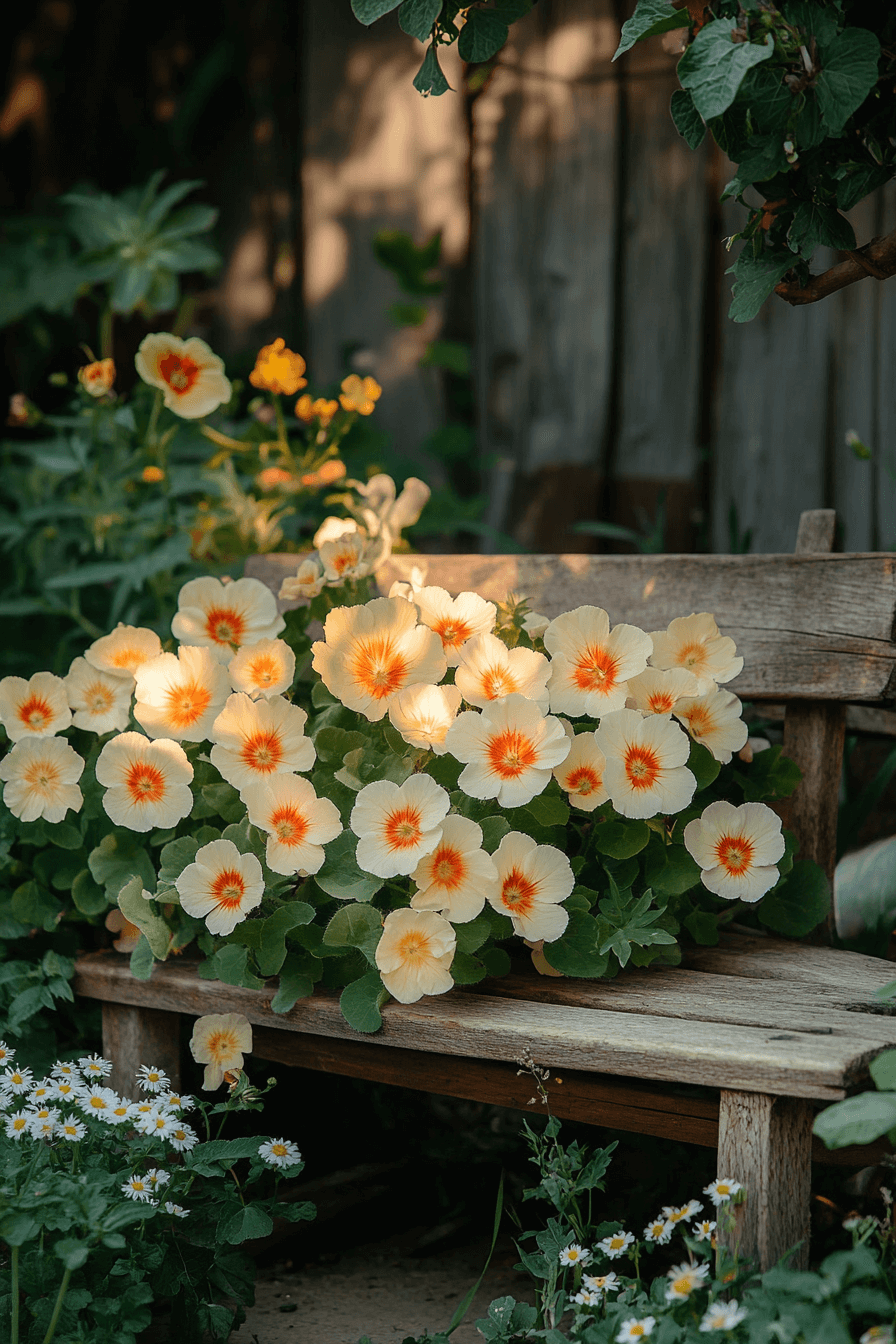
- Color: Creamy yellow petals blushed with cherry
- Energy: Sweet but discerning
- Place Her: Beside a tea bench, among herbs and quiet company
- Care Tip: Protect from heavy rain to avoid petal bruising—she’s delicate in the loveliest way.
✶ ‘Canary Creeper’ (Tropaeolum peregrinum)
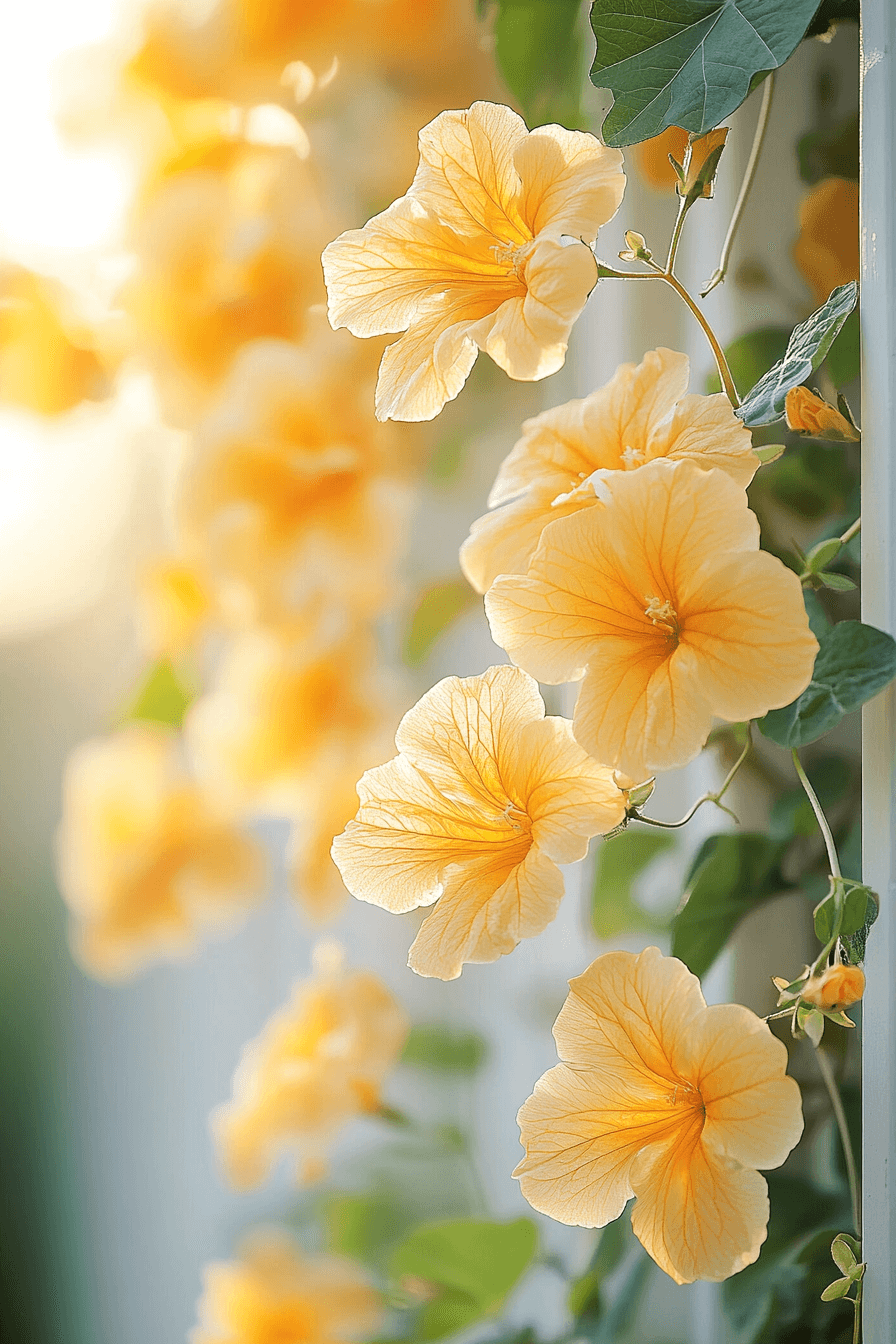
- Type: Perennial in warm zones, twining vine
- Flowers: Frilly yellow, bird-like
- Growth Style: Climbs fences, climbs moods, climbs hesitations
- Why I Plant Her: Because not all growth is rooted—some of it reaches.
- Care Tip: Needs a sturdy trellis and regular trimming to keep from overtaking its neighbors.
🍽️ Culinary Delights & Garden Companionship
Nasturtiums are the ultimate edible flowers—a full sensory experience:
- Leaves: Peppery like arugula, perfect in open-faced sandwiches
- Flowers: Bright, spicy, symbolic
- Seeds: Capers of the gentle gardener (pickle them!)
They also repel aphids and whiteflies, making them a wonderful companion plant for vegetables like beans, squash, and tomatoes.
🌱 Growing Tips for Nasturtium Success
- Sunlight: Full sun = boldest blooms
- Soil: Poor to average; too rich = too leafy
- Water: Low-maintenance once established
- Sowing: Direct in soil after last frost
- Harvest: Regular picking = more blooms
💬 FAQ: Growing and Enjoying Nasturtiums
Q1: Are nasturtium flowers and leaves really edible?
Yes, both are edible. The flowers are mildly spicy, while the leaves have a sharper, peppery flavor.
Q2: Do nasturtiums require fertilizer?
No—fertile soil leads to more leaves and fewer blooms. Nasturtiums prefer lean, well-draining soil.
Q3: Can I grow nasturtiums in pots or hanging baskets?
Absolutely. Use compact varieties like ‘Tip Top’ for containers, and trailing types like ‘Gleam’ or ‘Canary Creeper’ for baskets.
Q4: Do nasturtiums attract pollinators?
Yes, they are magnets for bees, hoverflies, and hummingbirds.
Q5: Will they come back next year?
They are annuals but often self-seed freely. Let a few flowers go to seed for surprise blooms next season.
Q6: Are nasturtiums good companion plants?
Yes! They repel pests and can protect vegetables in companion planting schemes.
🌼 Closing Petals
To plant a nasturtium is to plant a declaration—of color, flavor, and quiet defiance.
She thrives on neglect and still blooms with abandon.
She isn’t needy. She’s knowing.
She reminds us, especially women, that resilience doesn’t have to be loud to be real.
Sometimes, the most powerful thing we can do is bloom anyway.
With soil beneath my nails and sunlight on my lips,
— Jojo Len
🌸 Keep Wandering Through the Garden
- A Gentle Guide to Lavender Varieties: Perfect Choices for Balcony, Aromatherapy & Garden Bliss
- Five Tender Sunflowers for Small Gardens & Big Feelings
- A Gentle Guide to 8 Classic Rose Varieties & Care Tips for Slow Living Gardeners
- A Gentle Guide to Cosmos: Three Varieties for Joyful, Wild Gardens
- Gentle Blossoms: A Zinnia Guide for Your Soulful Garden
- A Gentle Guide to Marigold Varieties
- A Gentle Guide to Petunia Varieties
- A Gentle Guide to Pansy Varieties: Faces of Resilience
- A Gentle Guide to Viola Varieties
- A Gentle Guide to Tulip Varieties
- A Gentle Guide to Lily Varieties
- A Gentle Guide to Chrysanthemum Varieties
- A Gentle Guide to Calendula Varieties
- A Gentle Guide to Nasturtium Varieties
👉 Explore more at jojolen.shop
- Pinterest: @GrowandGathertogether | Instagram: @jojolen6666
- Images © jojolen.shop — credit if shared. No commercial use without permission.
